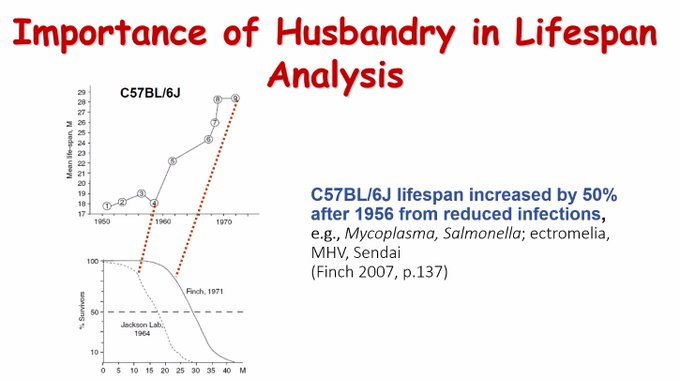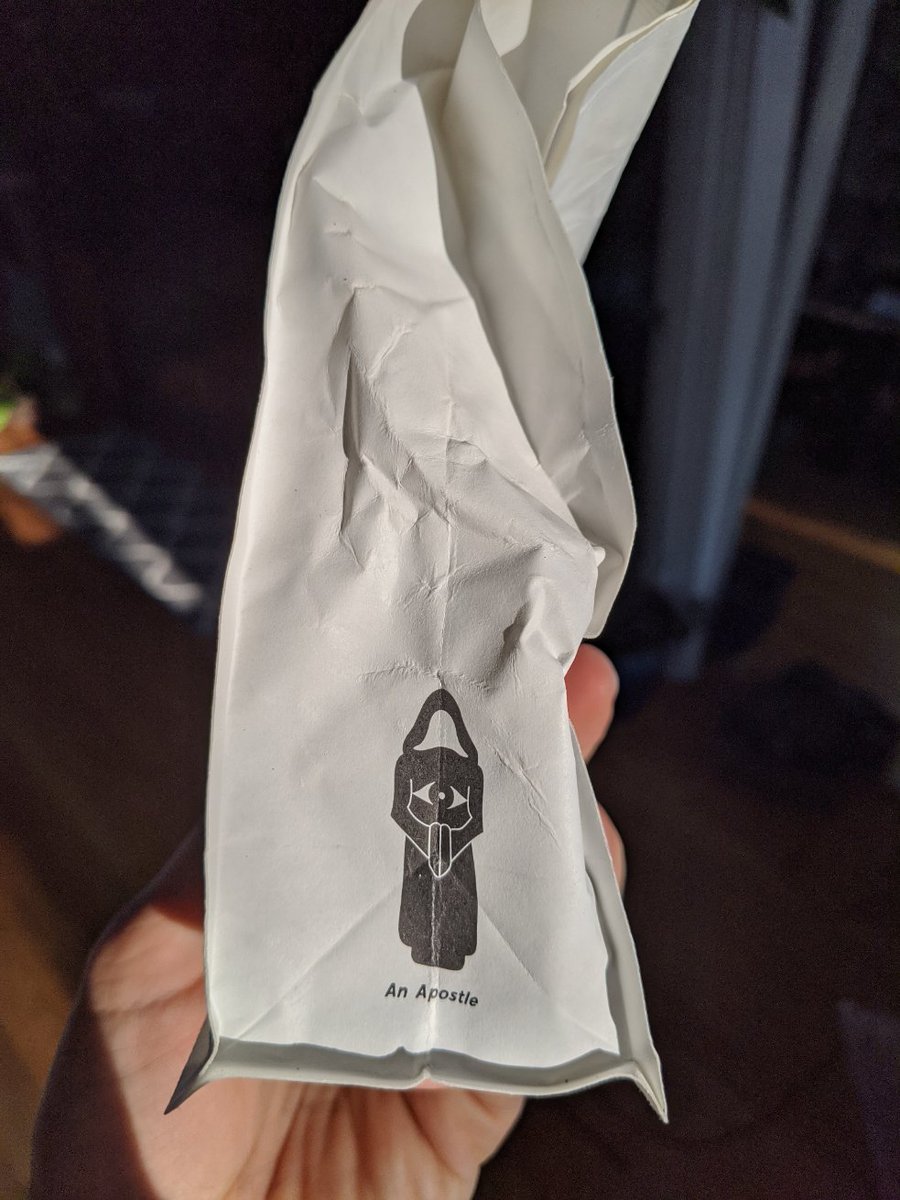
Arlan Richardson showing that JAX-housed mice, like humans, have undergone a dramatic improvement in #lifespan this century ... by reducing deaths from pathogens. #MindYourModels 

Recommends looking at lifespan data as the best indicator of husbandry quality at different institutions/sources. Mean survival should be at least 27-30 months.
Example: 2003 Igf1r study showing 33% lifespan extension (in het ♀️s), but mean lifespan of controls was only 19mos. Lifespan effect largely disappeared when replicated in cohorts with longer control lifespan.
This was my go-to question for fly lifespan studies as a postdoc.
This was my go-to question for fly lifespan studies as a postdoc.

Catherine Kaczorowki argues for large, genetically diverse cohorts for studying neurodegeneration in mice, on the basis of varying age of onset in human risk mutant carriers (presumably due to other influences): 

Crossed the standard 5xFAD #Alzheimer's mouse with the outbred BXD cohort, which gives +- AD transgenic with genetically matched (but diverse) littermates as controls: 

There are still big challenges in measuring cognitive phenotypes in mice, but the work certainly looks like an improvement in models. Notably, B6 genetic background seemed protective.
Full paper here: pubmed.ncbi.nlm.nih.gov/30595332/, by @sneuner_ in @KaczorowskiLab.
Full paper here: pubmed.ncbi.nlm.nih.gov/30595332/, by @sneuner_ in @KaczorowskiLab.
David Allison follows: By exquisitely controlling environment and genetics to detect small effects, results may not reproduce in real life or even at other study sites.
That's why @Gordian_Bio goes straight to diverse, spontaneous disease models, to better predict human outcomes
That's why @Gordian_Bio goes straight to diverse, spontaneous disease models, to better predict human outcomes
• • •
Missing some Tweet in this thread? You can try to
force a refresh






